Introduction
The increasing number of older people creates a heightened demand for modern approaches to senior care. One such emerging therapy gaining much traction in geriatrics is red light therapy (RLT). While RLT is known to address different health issues, its potential as a non-invasive treatment may improve the well-being of the aged.
This blog will provide insight into red light therapy, its advantages to the elderly, and its use in long-term care facilities to prevent and combat age-associated diseases.

Overview of Red Light Therapy and Its Potential in Geriatric Care
Red light therapy (RLT) is a noninvasive therapy that utilizes low red or near-infrared light wavelengths in the range of 600 to 1000 nm. These wavelengths can penetrate the skin and trigger several cellular processes by photobiomodulation. RLT was first intended to assist in the healing of deep tissue; it also captured attention because of its potential other uses in treatment, which[1].
Addressing the Growing Need for Innovative Senior Care Solutions
There are countless problems that the elderly population has to face today such as chronic pain, mobility problems, and mental health issues. Most of these involve traditional drug treatment which has side effects or does not work effectively. Red light therapy can improve aspects of health such as pain relief, cognitive functioning and general health of elderly people. RLT in the care of the elderly may provide non-drug solutions to overcome the challenge of overreliance on drugs and their unwanted effects.
Understanding the Science Behind Red Light Therapy
Mechanisms of Action: How RLT Works at the Cellular Level
The therapeutic effects of light therapy are based on its cellular energy production. At the cellular level, red light penetrates a layer of skin and then is absorbed by mitochondria. Mitochondria convert light energy into adenosine triphosphate ATP, a molecule that governs cellular processes.
RLT can promote cellular repair, alleviate inflammation, and speed up the healing of tissues by raising the level of ATP production in the cells. This is important for seniors as their cells are often slower to regenerate on account of various aging processes. Furthermore, RLT has been reported to promote blood flow and lymph drainage, which helps with the recovery process as well.
Exploring the Effects of Different Wavelengths and Light Sources
Different degrees of wavelengths have varying effects of penetration into the skin thus affecting which specific tissues can be targeted. For example, 600-650nm wavelengths are mostly applied in dermatology while 800-900nm wavelengths can penetrate deeper regions such as muscles and joints.
Safety and Efficacy Considerations for Senior Populations
While red light therapy is generally considered harmless, its application for senior care does have some bearable considerations. First, the skin in seniors may be more sensitive. Second, several health conditions might require modifications in treatment protocol. The elderly with photosensitivity or those on medications may need proper precautions. Working with healthcare professionals is therefore important in finding the right protocol for RLT, tailored not only for the safety of the treatment but their efficacy as well.
Alleviating Age-Related Health Challenges with RLT
Cognitive Decline: Alzheimer's Disease, Parkinson's, and Dementia
One of the most promising research directions for RLT shows the possibility of mitigating the effects of cognitive decline. Studies found red light therapy can assist in improving the functioning of the brain by stimulating mitochondria in the neurons, which may improve memory and cognitive abilities in Alzheimer’s, Parkinson’s and other dementia patients. Moreover, RLT may also decrease inflammation in the central nervous system – one of the causes of neurodegenerative disorders.
Musculoskeletal Disorders: Arthritis, Osteoporosis, and Chronic Pain
In the case of older people, for example, musculoskeletal issues like arthritis and osteoporosis pose a significant challenge. Red light therapy for joints has been proven to lessen swelling, increase blood flow, and encourage the growth of fibers, which all contribute to the restoration of the bones and joints. With the application of affected parts, RLT could increase the range of motion and decrease the intensity of pain in osteoarthritis or back pain as a result of chronic diseases.
Cardiovascular and Respiratory Conditions: Heart Disease, COPD, and Asthma
RLT also tends to support recovery from cardiovascular and respiratory disorders which are prevalent among old age people. Red light therapy, for instance, is believed to lower blood pressure and improve blood flow, which is essential in the treatment of heart complications. Also, improvement of circulation through RLT could be advantageous to people suffering from chronic obstructive pulmonary disease (COPD) or asthma, as it could aid in enhancing the functional capacity of the lungs and decrease the tightening of the airways.
Sensory Impairments: Vision Loss, Hearing Loss, and Peripheral Neuropathy
Red light therapy has prospects worth looking into when it comes to solving sensory deficits experienced by elderly persons. Current research on its applicability for vision deficit caused by macular degeneration is still a work in progress, however, preliminary studies indicate that RLT may be useful in the enhancement of cellular regeneration of the eye.

The Role of Red Light Therapy in Promoting Mental Well-being
Addressing Depression, Anxiety, and Loneliness in Older Adults
As the population ages, mental well-being becomes a critical issue in elderly care. Depression, anxiety and isolation affect many elderly individuals. The use of red light therapy can bring improvement in moods and emotional states by increasing endorphin levels and serotonin release, which is the neurotransmitter which has been known to be related to happiness and relaxation.
Creating a Supportive Environment for Emotional Resilience
Not only in terms of tangible physical advantages, RLT can help to produce a soothing effect, which can in turn alleviate stress and anxieties within elderly patients in senior care homes.
Enhancing Cognitive Function and Memory Retention
Implementing Red Light Therapy in Senior Care Facilities
The incorporation of red light therapy in elderly care homes needs a meticulous approach:
Best Approaches to Use RLT in Geriatric Nursing Care Practices
Start with low doses and maximize the doses according to the patient's demand and response. Treatment can be performed with the help of portable instruments or large plates suited for the area of treatment. It is essential to work with trained healthcare providers who will assist in ensuring proper usage of RLT.
Successful RLT Integration in Nursing Homes and Assisted Living Centers
Many nursing home facilities have already begun using red light therapy as a modality to improve patient outcomes. In some situations, RLT has been deployed as an alternative to painkillers, to facilitate the movement of patients, and to relieve the effects of dementia.
Choosing the Right RLT Devices and Treatment Protocols for Seniors
The degree of effectiveness of RLT is particularly reliant on the devices and the treatment strategies employed. Senior healthcare institutions should procure devices which are well-designed for older adults for ease of operation, safety aspects, and what wavelength is used.
The Future of Red Light Therapy in Geriatric Medicine
Emerging Research and Potential New Applications for Seniors
With the growing interest in RLT, additional applications keep coming up. Apart from the above-mentioned uses, there may be other positive effects for older adults in future research such as better sleep, less inflammation, and faster recovery post-surgery or injury.
Overcoming Barriers to Adoption in the Senior Care Industry
While RLT has great potential, there are still obstacles to its widespread use, including the cost of the apparatus and the knowledge gap among health service providers.
Advocating for RLT as a Standard of Care in Geriatric Health Management
Endorsing RLT as a natural therapy for elderly medical care facilities is an encouraging step toward enhancing the growth and development of older adults. With ongoing research, training and public awareness of red light therapy, it can become a bedrock of geriatric health management.
Conclusion: Empowering Seniors with Red Light Therapy
Red light therapy presents a huge opportunity for the aging population to improve their overall health and wellbeing. RLT addresses a range of age-related health issues including depression and chronic pain and provides safe and effective support to traditional health care systems. Given several geriatrics care centers’ viability assessment, RLT will most likely be one of the therapies that will promote healthy and pain-free living among the old.
References
- Glass G. E. (2021). Photobiomodulation: The Clinical Applications of Low-Level Light Therapy. Aesthetic surgery journal, 41(6), 723–738. https://doi.org/10.1093/asj/sjab025
- Royer, M., Ballentine, N. H., Eslinger, P. J., Houser, K., Mistrick, R., Behr, R., & Rakos, K. (2012). Light therapy for seniors in long term care. Journal of the American Medical Directors Association, 13(2), 100–102. https://doi.org/10.1016/j.jamda.2011.05.006
- Zhang, X. J., Wang, Z., Chen, J. W., Yuan, S. Y., Zhao, L., Zhong, J. Y., Chen, J. J., Lin, W. J., & Wu, W. S. (2024). The neuroprotective effect of near infrared light therapy in aged mice with postoperative neurocognitive disorder by upregulating IRF7. Journal of affective disorders, 349, 297–309. https://doi.org/10.1016/j.jad.2024.01.074



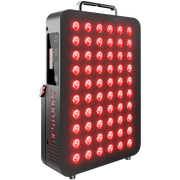









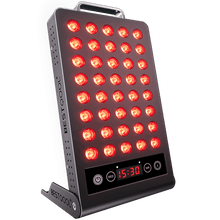
 Small
Small
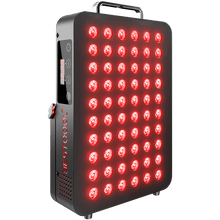
 Moderate
Moderate
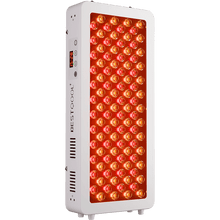
 Moderate
Moderate
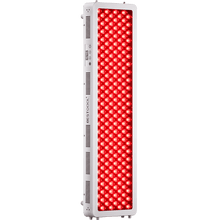
 Moderate
Moderate
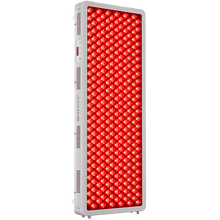
 Full
Full



